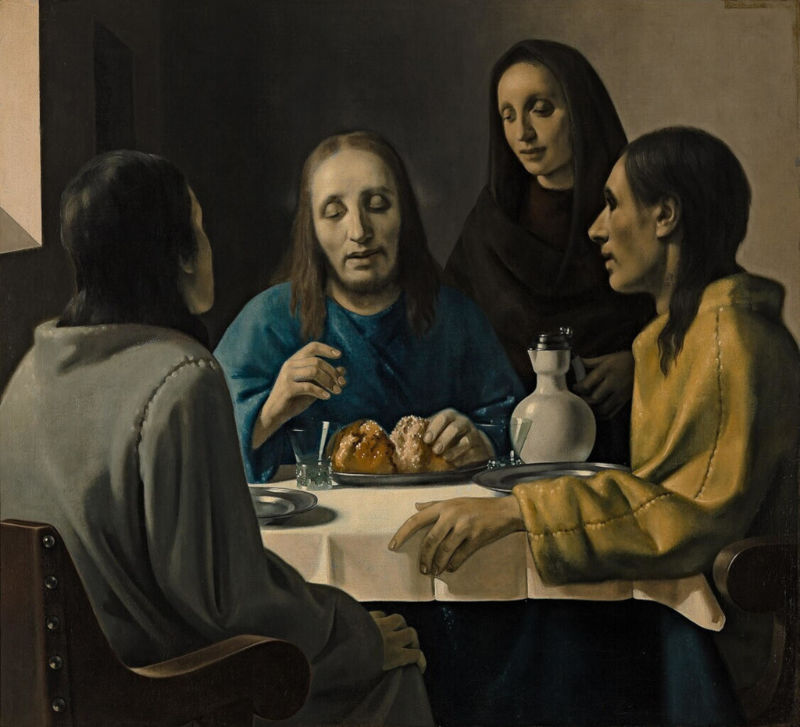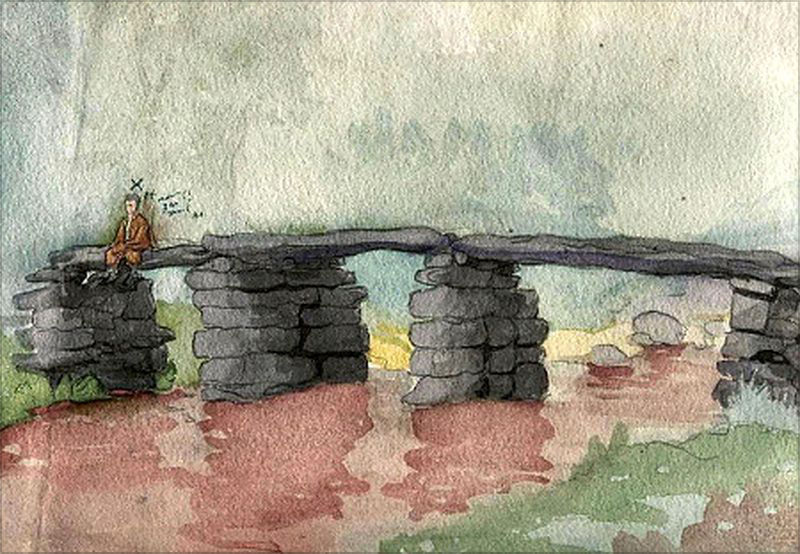Blog / 2009 / What’s in a Name?
April 6, 2009
Art isn’t a financial investment with promising returns even if the artist has an important name, so what is it about an artist’s reputation that makes their work so utterly collectible? Why, for example, are people like Rosie O’Donnell and Paul Stanley—people who made their names outside of the visual art world—able to sell their very mediocre paintings?

(attributed to Johannes Vermeer from 1939 to 1945)
Recently, I learned of Han van Meegeren, the 20th century’s greatest forger. His fascinating story calls into question everything that we think we value in art. Around the time of the Second World War, this failed Dutch artist went about forging a few early Johannes Vermeer paintings based on what the scholarship at the time believed these works might look like.
His works and the deception that went with them won him enough money to support his drug addiction and earned him a lasting place in art history and theory. As such, van Meegeren’s motives are forever psychoanalyzed. Since he’d been rejected by the art establishment as a so-so artist, it’s posited that the foregeries were van Meegeren’s way of proving that art critics were hacks by demonstrating that they’d praise work by any hand as long as the right name was attached to it. But that’s where the forger (or the people who believe he did what he did to stick it to The Man) are missing the point.
Art isn’t more or less valued based on who made it. Though there may be a frisson associated with touching something that Rosie O’Donnell touched, no one would buy her work if there wasn’t something more to the experience. The value of this kind of art resides in its connection to the artist, and specifically in its ability to act as a window onto into the artist’s mind.

We love nothing more than to psychoanalyze the maker through what they’ve made. The more compelling the maker, the more fascinating the work becomes.
Case in point: a collection of early watercolors by Adolf Hitler which will be auctioned off this month. Every news outlet which has announced the public viewing and sale of this work takes a moment to remark on what the artist revealed about his future self in these paintings, and many who read these articles also take the time to comment on the work of the 20th century’s most famous man—expressing everything from the “I hate to say this, but he was pretty talented” to the firm belief that these watercolors should all be burned.
Most of the works in the early Hitler collection are bucolic landscapes and inoffensive still lives depicting cut flowers in vases. But it’s the alleged self-portrait shown above that steals the show simply because it is the easiest to psychoanalyze.
To me, it’s a portrait of the artist as a future success: after all, Hitler’s political career looks more to me like an especially deadly form of performance art than a real bid for world domination. But as with all psychoanalysis, it’s the analyzer that’s more truly revealed. That Hitler’s work is remembered and even celebrated in some circles today says more about us than it ever could about him.
Did this post make you think of something you want to share with me? I’d love to hear from you!
To receive an email every time I publish a new article or video, sign up for my special mailing list.

